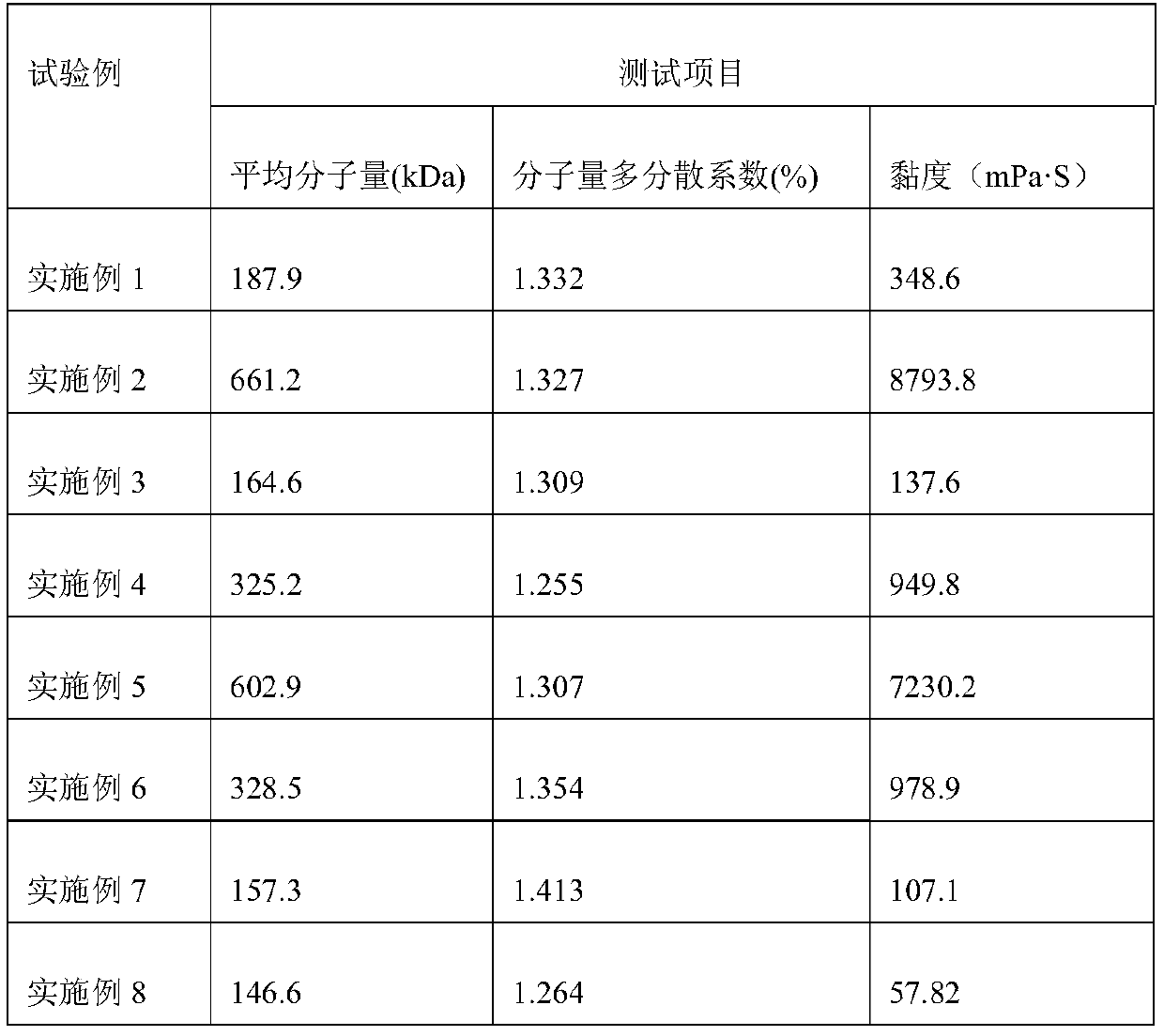Degradation method of konjac glucomannan
A technology of konjac glucomannan and konjac flour, which is applied in the field of degradation of konjac glucomannan, can solve the problems of energy consumption and time-consuming, and achieve the effect of saving degradation cost and simple operation steps
- Summary
- Abstract
- Description
- Claims
- Application Information
AI Technical Summary
Problems solved by technology
Method used
Image
Examples
Embodiment 1
[0032] The present embodiment provides a kind of degradation method of konjac glucomannan, comprising the following steps:
[0033] S1, preparation of water-containing konjac flour mixture: take 0.5kg of purified konjac powder (glucomannan content ≥ 90%, molecular weight 1133.6kDa), add 20% distilled water by weight, grind to make water and polysaccharide fully mix, get water-containing konjac powder mixture.
[0034] S2, heterogeneous wet heat degradation: the aqueous konjac flour mixture prepared in step S1 was placed in a sealed heating device, and the following process parameters were adopted: degradation temperature of 130°C, degradation pressure of 0.275 MPa, and degradation time of 30 minutes to obtain low molecular weight konjac polysaccharides.
[0035] S3, drying: take the low-molecular-weight konjac polysaccharide prepared in step S2 and place it in a blast drying oven, and dry it at 80° C. to a constant weight to obtain degraded konjac glucomannan, that is, degrade...
Embodiment 2
[0037] The present embodiment provides a kind of degradation method of konjac glucomannan, comprising the following steps:
[0038] S1, preparation of aqueous konjac flour mixture: 0.5kg of purified konjac powder (glucomannan content ≥ 90%, molecular weight 1133.6kDa), add 5% distilled water by weight, grind to make water and polysaccharide fully mix, get aqueous konjac flour mixture .
[0039] S2, heterogeneous wet heat degradation: the aqueous konjac flour mixture prepared in step S1 was placed in a sealed heating device, and the following process parameters were adopted: degradation temperature of 130°C, degradation pressure of 0.275 MPa, and degradation time of 30 minutes to obtain low molecular weight konjac polysaccharides.
[0040] S3, drying: take the low-molecular-weight konjac polysaccharide prepared in step S2, place it in a forced air drying oven, and dry it at 80° C. to constant weight to obtain degraded konjac flour.
Embodiment 3
[0042] This example provides a degradation method of konjac glucomannan, the raw materials and process steps used are basically the same as those in Example 1, the difference is that in step S1, the water-containing konjac flour mixture contains 40% water.
PUM
| Property | Measurement | Unit |
|---|---|---|
| shear viscosity | aaaaa | aaaaa |
| molecular weight | aaaaa | aaaaa |
| shear viscosity | aaaaa | aaaaa |
Abstract
Description
Claims
Application Information
 Login to View More
Login to View More - R&D
- Intellectual Property
- Life Sciences
- Materials
- Tech Scout
- Unparalleled Data Quality
- Higher Quality Content
- 60% Fewer Hallucinations
Browse by: Latest US Patents, China's latest patents, Technical Efficacy Thesaurus, Application Domain, Technology Topic, Popular Technical Reports.
© 2025 PatSnap. All rights reserved.Legal|Privacy policy|Modern Slavery Act Transparency Statement|Sitemap|About US| Contact US: help@patsnap.com



